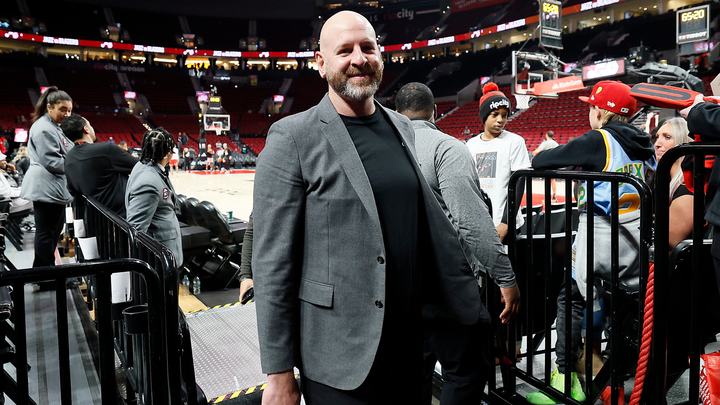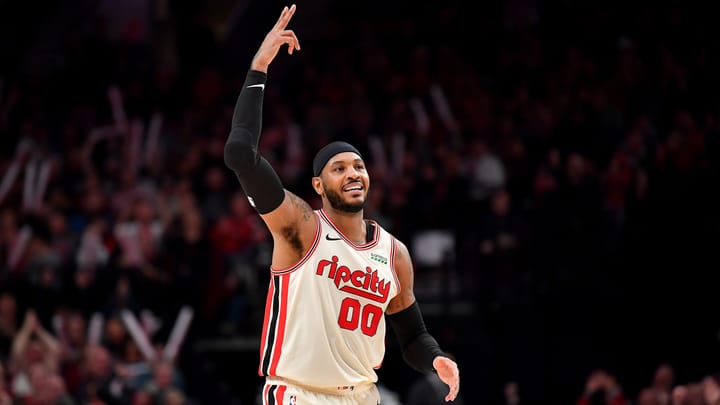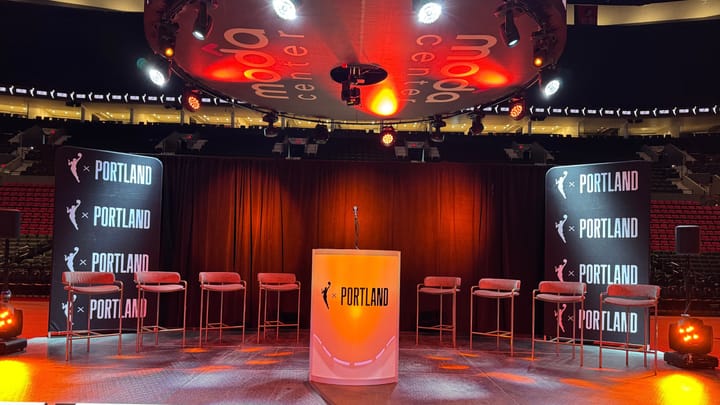How the Trail Blazers are Bringing Games to Visually Impaired Fans
A groundbreaking device from OneCourt is helping blind fans follow game action at Moda Center.

📍 PORTLAND, Ore. — Ever since she lost her eyesight at age 29, going to sporting events was more trouble than it was worth for Kirsten French.
“I had to go with someone and that person had to describe everything,” she says. “There's so much extra noise and you can get lost in the information.”
Trail Blazers games are one place where French, a senior program manager with the Northwest Association of Blind Athletes, and other visually impaired fans don’t have to do that anymore.
This season, the Blazers were the first major professional sports team to launch a partnership with a new company called OneCourt to offer a new way for blind and low-vision fans to follow game action closer than ever before. Users move their hands across the surface of a device that utilizes haptic feedback to track where the ball is on the court while an audio feed provides score updates and other essential information through headphones.
“Now, I'm able to go with one or two friends who may say a couple of things, but they're just watching the game and I'm completely watching it on the haptics,” French says. “We’re all just enjoying it the way everyone around us is enjoying it.”
In the fall of 2021, Jerred Mace was a student at the University of Washington majoring in industrial design. One day, he happened upon a video online of a blind man at a soccer match in England who was following the action thanks to a woman moving his hands across a game board mirroring the movement of the ball.
That was his light-bulb moment.
“He was using touch to experience the game,” Mace says. “It really stood out to me both as a designer, and that this experience was meaningful to him, and I thought, ‘We've got to bring that to everybody.’”
Mace quickly formed a team with a few other UW students and began working on it. Their initial demos, which they tried out on campus, featured a grid of pixels vibrating to represent movement.
The next step was evolving it from a pre-programmed set of movements to be something that reflected live movement with vibrations. Tennis was the first sport they used to demo the idea—the early versions of the OneCourt device were not unlike the original video game Pong.
Once they had the concept mapped out, the OneCourt team began cold-emailing professional sports teams with little more than an idea and a rough prototype to test out.
The Blazers were the first team to respond and say they were interested in talking.
“We've always been focused on inclusivity and making sure that Trail Blazers games are as accessible as possible to all fans,” says Matt Gardner, the team’s senior director of customer insights.
The Blazers and OneCourt ran a pilot program during the final three games of the 2023-24 season, where they worked through issues with connectivity at the arena and delays in transmitting the tracking data from the league’s Hawkeye cameras to the devices.
On Jan. 8, the Blazers officially announced a partnership with OneCourt and Ticketmaster to make the devices available to blind and low-vision fans at every home game. Soon after that, the Paralympic athlete and social media influencer Anthony S. Ferraro, who is blind, went viral when he showcased the device in a video that’s gotten millions of views on YouTube, Instagram and TikTok.
After the launch, Gardner says other NBA teams began calling the Blazers asking what the device was and how they could get it for their arenas. OneCourt has since launched partnerships with the Sacramento Kings, Phoenix Suns and Philadelphia 76ers.
The OneCourt device, which is roughly the size of an iPad, has a rubber surface and raised outlines of a basketball court. During a game, the device will connect via WiFi to the NBA’s tracking data, which charts where the ball is on the court, and allow the user to follow the flow of the game by moving their hands across the board.
The area around the basket gives a stronger vibration one, two or three times to represent the number of points scored, while a headphone jack on the side allows the user to listen to an audio feed to inform them of made and missed baskets, rebounds and other things that happen in the game. Buttons on the side can control volume and provide score updates.
“It makes me want to go and be excited to go,” French says. “I can go with friends, or I can go by myself.”

Now that OneCourt has proof of concept in the NBA, they’re planning to adapt their technology for other sports. Mace says they’re currently in talks with Major League Baseball about working together and are also heavily focused on developing a version of the device for hockey.
In the short term, their biggest challenge is navigating the delay in transmitting the tracking data to the device, which can vary from arena to arena depending on the speed of the internet connection. They’re hoping to have at-home units available for preorder in 2026, but there they also face challenges in transmitting the data with minimal lag. If a user is listening to the radio broadcast of a game at home and not getting the tactile data instantaneously, it can create an effect similar to your television having the audio and video feeds out of sync.
There’s still work to be done before OneCourt’s devices are ready to be mass-produced and sold at that level. But their early success with the Blazers and other NBA teams has them excited about what the future holds, not just for the company but for blind sports fans.
“We view ourselves as a tactile broadcaster,” Mace says. “This is a new form of media. It hasn't been done before.”
For her part, French and the NWABA are working with the Timbers and Thorns on bringing the technology to soccer games.
“It seemed so far in the future that it's wild to see now, two years in,” she says. “That's just not the speed that things move, especially in the blindness world.”




Comments ()